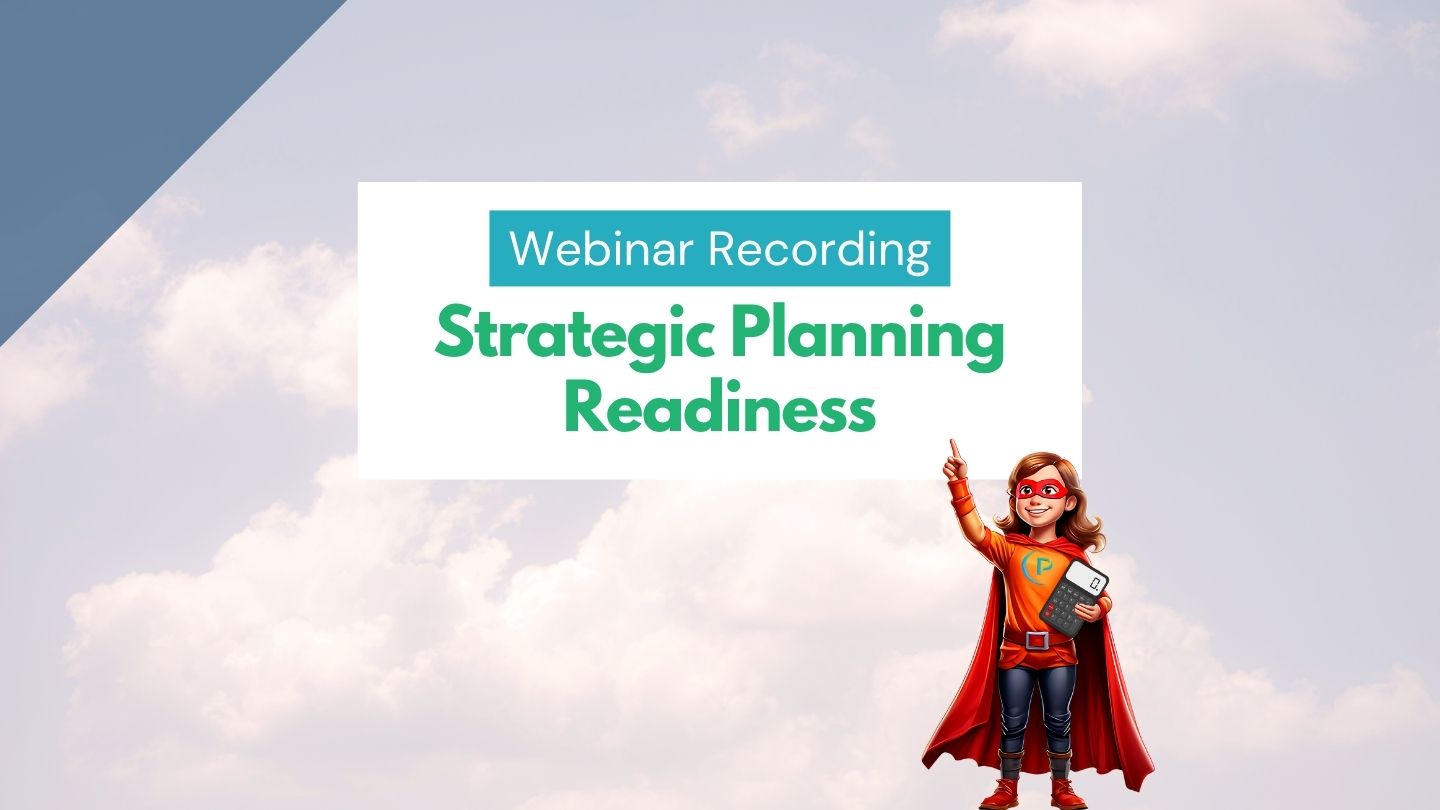Forecasting with Confidence for NFP Executive Directors
As we move through 2025, Executive Directors in the not-for-profit sector are managing in an environment that’s both mission-driven and metrics-focused. Pressures are intensifying, driven by evolving funding models and more rigorous stakeholder expectations, as well as ongoing operational challenges. Organizations with budgets between $3 million and $15 million are especially affected, often finding themselves in a growth phase without the financial infrastructure to support it.
We are seeing, time and again, that a not-for-profit’s program impact is accelerating, but the financial insight and systems needed to sustain that growth are lagging. In this context, forecasting becomes not just helpful, but it becomes critical.
Forecasting as a Leadership Tool
Forecasting, at its best, is not a spreadsheet exercise; it’s a leadership tool. It allows organizations to operate with a forward view, aligning strategic priorities with financial realities. Instead of reacting to budget variances after the fact, forecasting enables leaders to shape outcomes ahead of time.
Three major benefits come into focus:
- Strategic Planning with Confidence
Imagine launching a new program with a clear understanding of its multi-year financial impact. Forecasting helps you weigh the trade-offs, model the risks, and communicate the implications clearly to your board and funders. It shifts decision-making from a reactive to an intentional approach. - Demonstrating Accountability and Readiness
Sophisticated funders are looking beyond annual budgets; they want to see an organization’s ability to project, plan, and pivot. A strong forecast demonstrates maturity in financial management, which increases funder trust and often strengthens grant applications or renewal conversations. - Crisis Prevention and Operational Stability
Forecasting gives you early warning. You can identify revenue gaps and adjust spending accordingly. You can project cash flow issues before they hit payroll. You move from “What happened?” to “What do we need to do next?”
Building a Forecast That Works
A forecast is only as good as its foundation—and its usability. Here’s what effective forecasting looks like in practice:
- Start With Reliable Data
If your books are out of sync or your chart of accounts doesn’t reflect how your programs operate, your forecast will be misleading. Cleaning up the data is the first step, and it’s worth the effort. - Collaborate Across Departments
The best forecasts are cross-functional. Finance doesn’t operate in a vacuum, so program leads and development staff need to be part of the process. This builds buy-in and leads to more realistic assumptions. - Make It Dynamic, Not Static
Annual budgets are quickly outdated. A rolling forecast—updated monthly or quarterly, keeps pace with reality. It becomes a tool for regular leadership conversations, not just a once-a-year planning requirement. - Model Multiple Scenarios
Especially in the not-for-profit world, funding can be volatile. Building in “what if” cases (e.g., “What if we lose this grant?” or “What if enrollment grows by 15%?”) helps leadership see the road ahead from multiple angles.
When Outside Help Makes Sense
Many not-for-profits have capable internal bookkeepers or financial managers, but still struggle to find time or expertise to build forward-looking models.
At Part Time CFO Services, we often enter the picture at a point where clarity is lacking but needed most. We help build out the forecasting model, mentor internal staff, and establish repeatable processes. We don’t replace your team—we strengthen it. Our goal is to ensure that your organization not only meets compliance obligations but thrives strategically.
Beyond the Numbers
Forecasting is ultimately about decision support. It’s about empowering leaders to steward resources with foresight and integrity. It aligns your financial future with your mission strategy, making that alignment visible and measurable.
In a sector where trust is currency and clarity is power, forecasting provides Executive Directors with a language and a lens for effective leadership. It fosters better conversations with your board, funders, and team.
Let’s Talk
If your organization is growing, changing, or simply seeking more financial clarity, we’d love to talk. Forecasting is just one part of a healthy financial function—but it’s a powerful place to start.
We’d love to hear your thoughts on this post. Whether you have a question, a different perspective, or just want to chat—drop us a line.
Share
Get our newsletter
Recent posts
- Why Cash Flow Is the Financial Story You Can’t Afford to Miss
- Markup vs Margin: Unlocking the Secrets to Profitable Pricing Strategies
- Strategic Planning Readiness: A Pre-Planning Briefing for Executive Directors
- Is your business getting what it needs from the Controller role
- What If You Don’t Have a CFO (with M&A Experience) On Staff?










